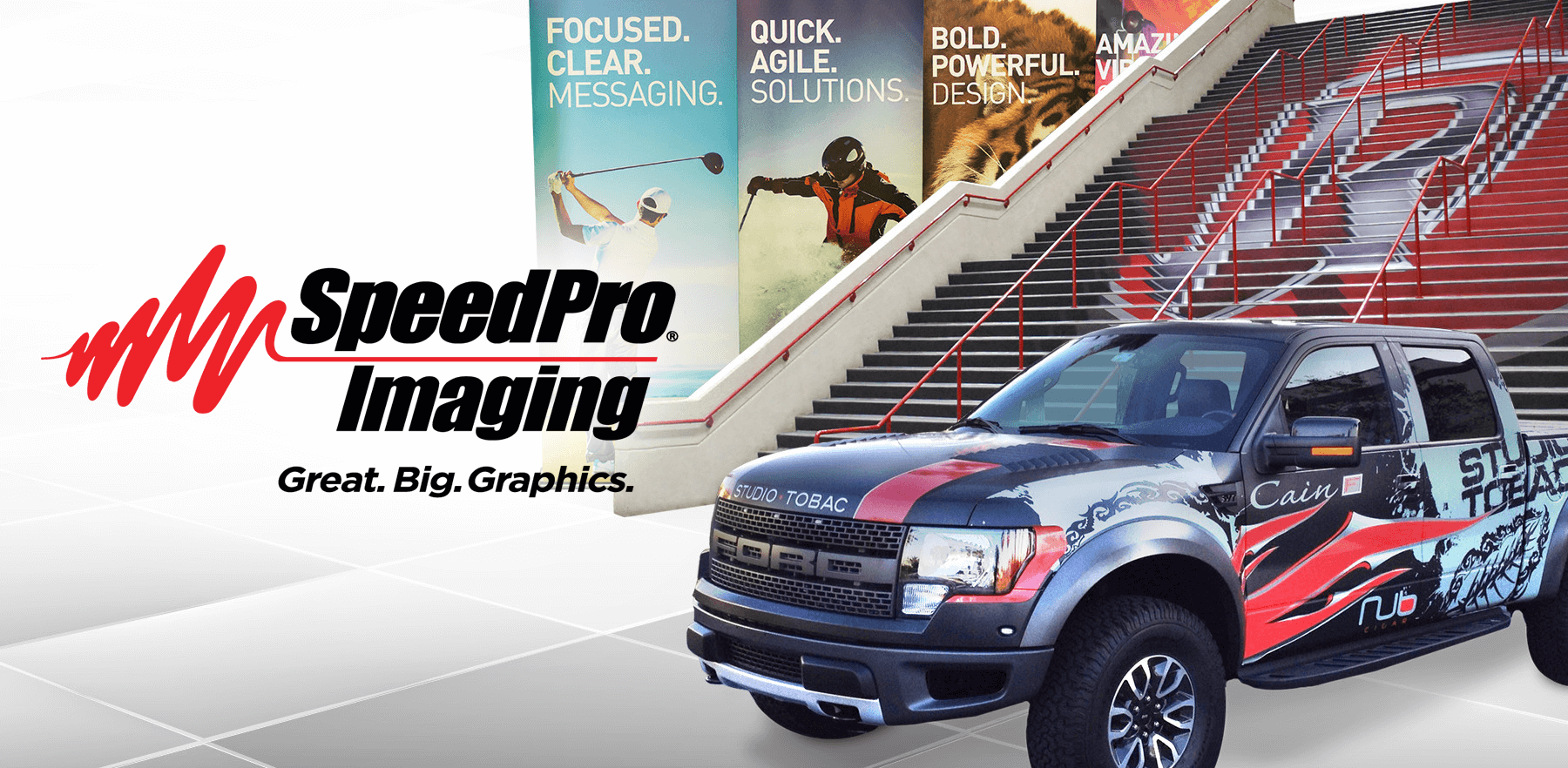
Brand Relevance: How to Build and Maintain a Strong Corporate Brand
JUNE 3, 2019| SpeedPro West ChesterCategories
Advertising, Branding, Corporate Marketing, Design, Graphics, Image, Interior Design, Outdoors, Trade Show, Uncategorized, Vehicle Wraps, Wall Murals, Window Graphics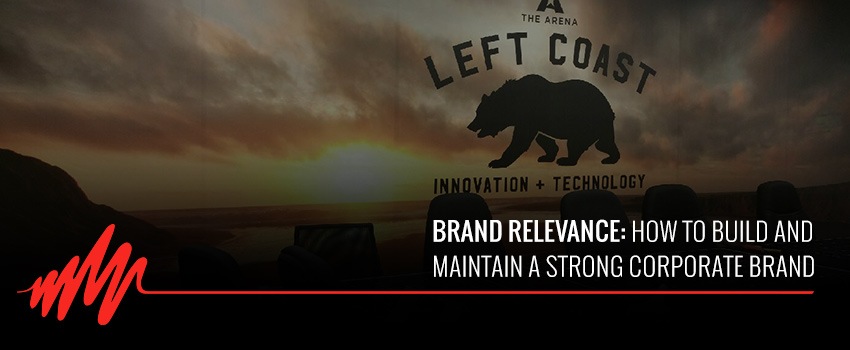
Nike. Coca-Cola. Disney. When you hear those brand names, you likely think of the products they produce as well as the way the brand looks and the way it makes you feel.
When you hear “Nike,” you see a “swoosh.” You might also think, “Just do it.” You envision athletes and maybe even picture yourself running, swimming and dunking with the best of them.
When you hear Coca-Cola, you see a bright, cherry red and a swirly white script. You think about happy times, such as family picnics or a trip to the movies.
And Disney? “Disney” conjures up images of mouse ears, smiling people and dancing princesses. It makes people remember their childhoods or family vacations.
Nike, Coca-Cola and Disney are just three examples of companies that have nailed it when it comes to strong corporate branding. Each of the three has established an identity that sticks with customers and informs the relationships the companies have with those customers.
Branding isn’t just for household names, big businesses or companies that have been in existence for decades. Every company that wants to connect with a customer base should focus on building up and maintaining a strong brand.
What Is Branding?
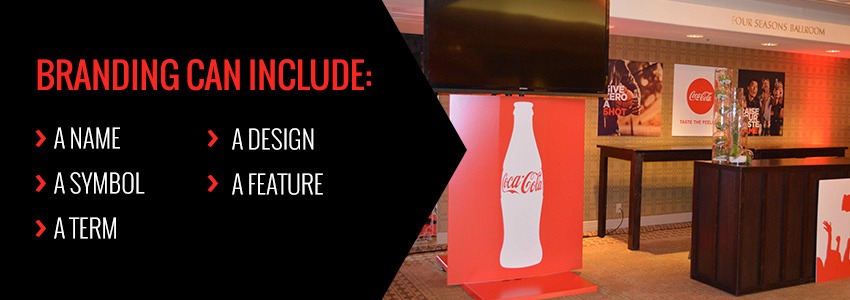
Branding can be a tricky concept to grasp, in part because it’s made up of several layers. One definition of “brand” describes it as a feature that identifies one product or service and separates it from other available products or services. Under this definition, “brand” is:
- A name, such as Nike
- A symbol, like their swoosh
- A term, like the “Just do it” tagline
- A design, such as Disney’s mouse ears
- A feature, such as Coca-Cola’s signature packaging
But branding goes beyond mere identifying features. Another definition of brand and branding states that it is all about the customer experience and how the name, symbol, design and so on influence that person’s experience. As a person gains more experience with a brand, whether by using the product or service or by seeing advertisements for it, their reaction to the company behind the brand is likely to evolve. Another way to define brand and branding is the emotions, thoughts and feelings people have when they see or hear an identifying feature of the company.
Of course, the emotions, thoughts and feelings you want people to have about your company might not always match up with what people actually think and feel about your company. For example, Whole Foods, a natural and organic grocery chain, most likely want people to think of it as a healthy place to buy food and other supplies. It wants to project a wholesome image, one that brings to mind health and happiness. But because the groceries at Whole Foods were historically more expensive than the groceries you’d find at a conventional supermarket, the store earned a reputation for being spendy. Its reputation also earned it the nickname “Whole Paycheck.”
In this case, the store’s branding in people’s minds is at odds with the store’s perception of itself. One way that Whole Foods has tried to realign its brand is by introducing an in-house brand of lower cost pantry staples. Additionally, Amazon purchased the retailer in 2017, and began offering more deals and discounts to Amazon Prime customers.
There are other cases when people’s positive thoughts and feelings about a brand lead them to come up with individual associations for the company. For example, people who like the social media platform Instagram often shorten it to “Insta,” and people who like Target and think of it as a more upscale alternative to WalMart or Kmart have nicknamed it “Targé.”
Branding seeks to control the difference between the two, or at the least, make it so that people think and feel more positive things about your company than negative things.
Why Care About Your Corporate Brand?
Imagine you’ve got an idea for a company and are getting ready to launch a new product or service into the world. The trouble is that you’re new, you’re unknown, and you’re not sure how to go about making the world notice you. You could just launch your product and hope that its merits speak for itself and convince people to buy it.
But if you want a better chance at success, you’re going to have to focus on branding and establishing a corporate brand. From the basics, such as identifying your company, to more complex concerns, such as advertising your business and building up a strong team of employees, you need to have a corporate brand.
Here’s what a brand and branding do for your business:
1. Your Brand Sets Your Company Apart
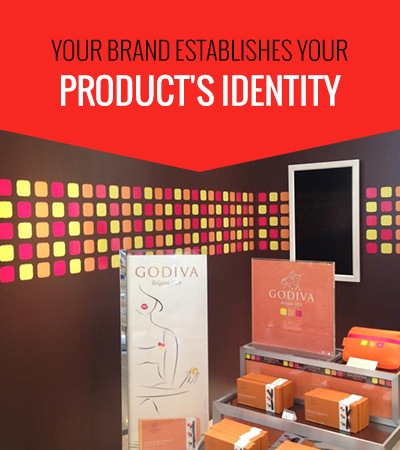
At the most basic level, your brand establishes your product’s identity and lets customers who might see it on the shelf know why it’s different from a similar item offered by a different brand. The logo, colors and packaging you use all help customers set your product apart from the rest. In some ways, colors, logos and packaging can change people’s perceptions of a product, even if the item inside one package is identical to the item inside a slightly different package.
2. Your Brand Builds Loyalty
Your company can establish brand loyalty by appealing to the values that matter most to your target customer. For example, you can hire a celebrity to be your spokesperson if that celebrity connects with your target audience. Brand loyalty can trump logic for some customers. Objectively, whether Coca-Cola is better or Pepsi is better doesn’t matter to people who are loyal to one or the other brand. People who are team Pepsi are going to be loyal to Pepsi even if Coca-Cola is cheaper.
3. Your Branding Is Connected to Employee Pride
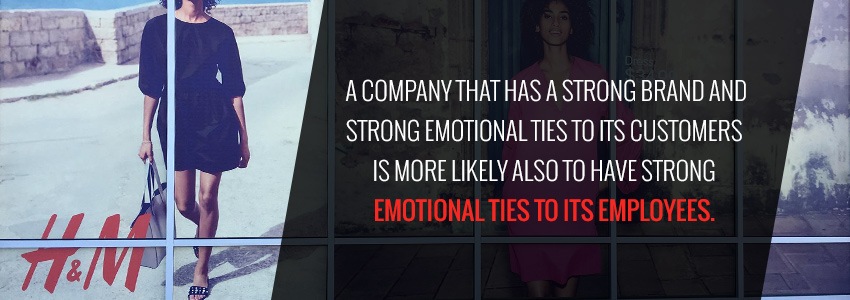
Your brand and branding don’t just allow you to engage with customers and build up a strong, loyal customer base. It also influences your company’s relationships with its employees. A company that has a strong brand and strong emotional ties to its customers is more likely also to have strong emotional ties to its employees. One of the goals of building up a corporate brand should be creating a workplace that people are proud to be a part of.
4. Your Brand Increases Your Company’s Value
Things that are recognizable and recognized tend to have more financial value than things that aren’t known. That’s why people like Kylie Jenner and Selena Gomez earn nearly $1 million for posting on Instagram while the average person either creates posts for free or in exchange for a product. When people know what your brand is, they’re more likely to put their money behind it. The same is true for investors. Establishing a brand identity tells the world you have arrived and you’re worth something.
5. Branding Creates Consistency
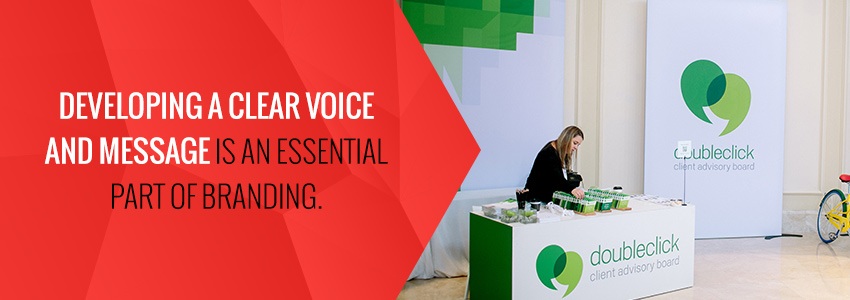
Imagine you’re having a problem with a company. You file a complaint, the company steps in, apologizes and gives you a refund. A month later, you have the same problem. Only this time, the company’s response is, “Too bad.” You’d likely be a little annoyed and pretty confused. Developing a clear voice and message is part of branding, and that clear voice and message help you maintain consistency. That way, when something goes wrong, customers get the same response. Consistency isn’t only important when you’re interacting with customers. It’s also essential for creating a recognizable and identifiable brand. If you always change your logo, signature colors or product offerings, people aren’t going to know who you are. More importantly, they won’t know if they can trust you.
6. Branding Builds Trust
Think about the companies you work with during your day-to-day life. You most likely purchase from them or interact with them because, at some level, you trust them. Having a defined brand and an articulated brand message builds trust with consumers. People who shop at Nordstrom do so because they trust that the store will accept their returns if there’s a problem with the products or even if they just changed their mind. People order coffee at Starbucks or Dunkin’ Donuts because they trust that they will get the same strength and flavor no matter what day of the week it is.
7. Branding Increases Purchase Intent
Have you ever bought something because of the brand name? People are more likely to make a purchase when they know the brand, and perhaps more importantly, when that brand has a coolness factor behind it.
How to Build a Strong Brand Identity
There’s more to building a brand than choosing a name, a color scheme and a logo. At its core, building up your corporate brand means identifying what your company is and what’s important to it. From there, you can focus on the external features of a brand and the relationships you establish with your customers.
If you’re not sure how to get started building up your brand, this step-by-step guide will help.
1. Know Who You Are
It doesn’t matter if your company is new and establishing a brand for the first time or if you’ve been around for a while and are hoping to re-brand. The first thing to do is figure out who you are. On the surface level, that means establishing the basics, such as your company’s name, what you sell and how long you’ve been around.
Going deeper, it means zeroing in on your company’s goals and deciphering what it wants and what it plans on accomplishing. At this stage, it can help to refer to your business plan to get an idea of where you want your company to be in a year, in five years and so on.

Another part of the identification process is to figure out what sets your brand apart from the rest. What makes you unique? What’s your competitive advantage? You might also find it helpful to run a SWOT analysis at this stage. With a SWOT analysis, you identify your company’s strengths, weaknesses, opportunities and threats.
When establishing your brand identity, it can help to think of adjectives that describe your company or how you want customers to perceive your company. Do you want people to think of you like a cool, in-the-know, older sibling? Are you trying to be fun, amusing or informative? To help you define your brand’s personality, think of the personality of other brands. When you think of Nike, for example, what type of person comes to mind? When you think of the Gap, who do you see?
2. Identify Your Mission
Your company’s mission is the reason why it exists. The mission is the thing you set out to achieve. Odds are, you created a mission statement when writing your business plan. Now is the time to bring it out and use it, as your mission statement plays a big role in helping you establish your brand identity. Ideally, how you visually choose to represent your brand and the relationships you aim to build with customers through branding will all connect back to your mission statement and help to keep your company on track.
3. Establish Your Brand’s Visual Identity
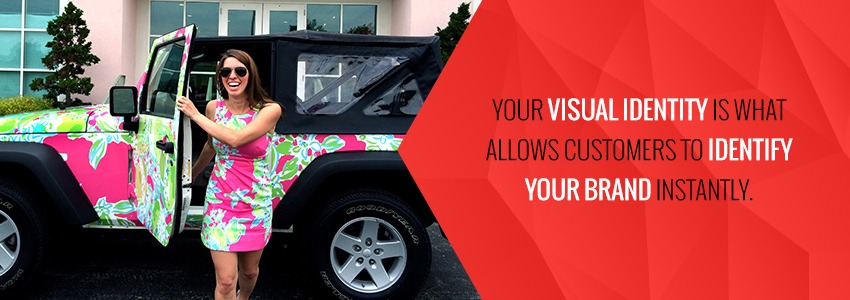
After you’ve figured out what your company is and what it’s mission is, it’s time to think about how to represent those concepts visually, as part of your company’s visual brand identity. Your visual identity is what allows customers to identify your brand instantly, without putting much thought into it.
Several concepts to consider when putting together your company’s visual identity include:
Your Logo
Your brand’s logo is the symbol or design that instantly identifies a product as belonging to you. When people see a polo shirt with a little alligator on it, they know right away that it’s an Izod brand shirt. When they see a shirt with a polo player on it, they know it’s a Ralph Lauren shirt. Well-designed logos instantly identify your brand and convey a message you want to be associated with your company. The polo player on Ralph Lauren shirts suggests a life of luxury and enjoyment, for instance.
Colors
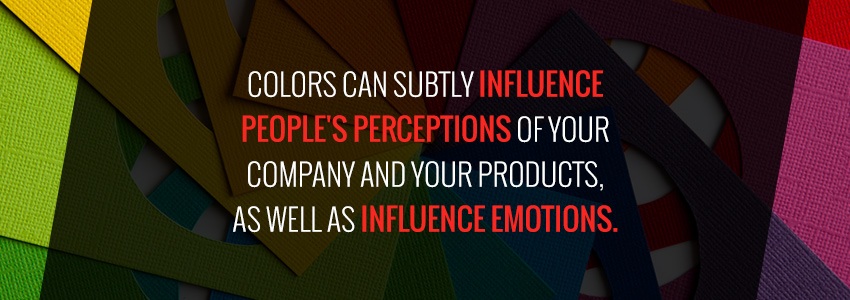
Colors also help customers identify your brand, especially if you decide on and stick with a distinct color palette. But color does more than identify your brand and company. It can also subtly influence people’s perceptions of your company and your products. Certain colors may affect the taste of foods. For example, blue packaging can make people think that what they are eating tastes saltier. Beyond affecting taste, colors also influence emotions. Red can make people feel excited or agitated while blue is thought to be calming. When choosing your colors, look beyond how they look on the color wheel and consider the reaction they might produce in customers, too.
Fonts
People often assign a lot of meaning to handwriting. If your handwriting slopes to the left, you might be introverted. If it slants to the right, you might be outgoing. The font you choose for your brand can also reveal a lot about its personality. A serif font might be ideal if you’re trying to create the impression that you’re a distinguished, serious company. A sans serif font might work if you want people to think of you as modern and trendy, but still professional. A font that looks like someone’s handwriting can send a message that your company is fun, quirky and unique. There are also practical considerations when picking a font. For example, sans serif fonts are usually easier to read on screens.
Where are you going to use your brand’s visual identity? On any sort of marketing material. Use your color scheme and chosen font on your website, for example. You’ll also want to use your logo, font and colors on any printed materials, such as signs, banners and stationery.
Although you want to be consistent and use your colors, font and logo across all of your marketing and other printed materials, don’t be afraid to change things up from time to time. For example, you can roll out a new, holiday-themed color scheme in November and December or change up your color scheme to correspond to other events during the year.
4. Create a Slogan or Tagline
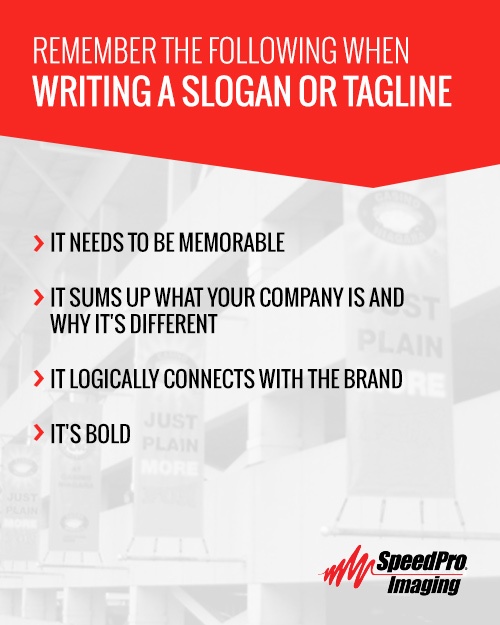
If your colors and logo are how people visually identify your brand, then your slogan or tagline is how they remember your branding. A slogan or tagline captures the essence your brand, usually in fewer than 10 words. It’s also important it be memorable so if people remember nothing else about your company, they walk away remembering your tagline.
Writing a slogan or tagline can seem tricky, but remembering the following will help you come up with one that works:
- It needs to be memorable. When it comes to making it memorable, often the shorter, the better. A slogan that’s got a rhythm or that rhymes can also stick in people’s minds.
- It sums up what your company is and why it’s different. Slogans should be unique and should clearly convey your company’s unique points. If you’re stuck, think of the things that set you apart and work back from there.
- It logically connects with the brand. People shouldn’t scratch their heads after hearing your slogan.
- It’s bold. If you’re going to make a claim with a slogan, make a claim. Don’t use conditionals.
You might need to test out a few slogans before you find one that sticks. Before unveiling your new slogan to the world, repeat it to others at your company or to your friends and acquaintances. If you get blank looks, it’s a good idea to go back to the drawing board.
5. Build an Emotional Connection With Customers
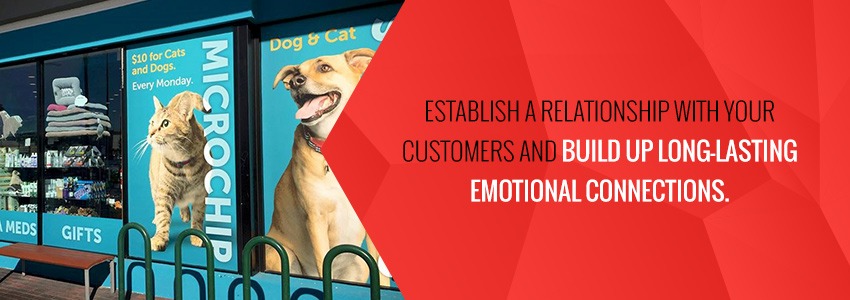
The last step when creating a strong brand is to establish a relationship with your customers and build up long-lasting emotional connections. Initially, your branding should influence how people perceive your company. As they continue to have a connection and relationship with you, the way customers perceive your brand or the branding they assign to you should be positive — think “Targé” compared to “Whole Paycheck.”
The visual elements of your brand will influence the connection you have with your customers, but so will the brand programs you offer to them and the messages you send. Some of the factors that go into building an emotional connection with your customers include:
- Offering amazing customer service. Give customers easy access to help and support when they need it. Being willing to listen to individual problems and come up with a unique solution will help cement a connection with a customer.
- Providing loyalty or rewards programs. Providing people an incentive for shopping or working with your company keeps them coming back for more.
- Providing a high-quality product. Even in branding, actions speak louder than words or logos. Having a catchy slogan and beautiful logo will only take your company so far if the product is sub-par.
- Being there for customers. Whether it’s a national crisis, a natural disaster or a personal problem a single customer is facing, being the brand that says, “We’re there for you,” and backs up that statement with action — such as donating supplies or refunding a purchase — is crucial.
- Staying one step ahead of problems. At some point, your company might face a branding crisis or get some bad press. Having a plan to respond to any issues that come up is crucial to maintaining happy and healthy relationships and healthy brand perception.
How to Maintain Brand Relevancy
Once you’ve laid the groundwork for a strong corporate brand, your work isn’t finished. The next stage is to keep your brand relevant in the eyes of consumers. That means continuing to offer stellar customer service and to listen to customer needs and concerns as well as continually adjusting as needed and doing outreach and marketing to connect with new customers. These days, marketing and branding include a mix of print-based methods, such as graphics and signs, as well as digital methods, such as maintaining a robust social media presence and having a website you update regularly.
Get Help Building a Strong Brand Identity
Whether you’re looking for input on color schemes or need help designing your logo, you don’t have to design and create your company’s branding on your own. A consultation with SpeedPro’s corporate branding experts can help you get on the road to a visually appealing, concrete brand identity. To learn more, give us a call or visit our Studio.







